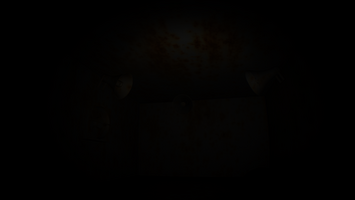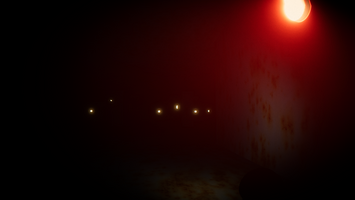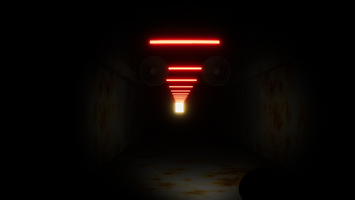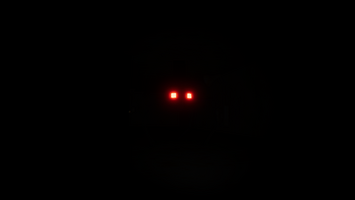A Way Out: Post Mortem






A Way Out: Post Mortem
Overview:
A Way Out is a procedurally based maze solving horror game. In this game the player is tasked with finding five buttons placed throughout a procedurally generated maze while avoiding procedurally animated enemies. This game is the first installment in a three part trilogy of games with a strongly interconnected storyline.
Successes:
Technology:
There are three primary tech successes in A Way Out which are discussed in a separate article on A Way Out. Therefore these will not be discussed here. In short, each technology was successfully created and implemented with few significant roadblocks.
Art:
A Way Out is, as of yet, my best attempt at capturing the atmosphere of fear which I set out to make. I believe that a cohesive art style is essential to creating a professional product. However without any art experience and a small skillset, it becomes very difficult to achieve a specific vision with a specific art style. The way I have been learning to overcome this inadequacy of mine (lack of visual artistic skill), I have been shaping the experience around the art assets I use (textures, models, ect..). For example, I went into this project with a very rough idea of what I wanted to create. I wanted to create a game revolving around the exploration of a procedurally generated maze. The game was not even supposed to be a horror game at all. I had to make the game a horror game out of necessity however. It is far easier to create a good looking horror game, than a non-horror game. This is due to the restriction of sight commonly found in the genre. It is far more obvious that a wall has a texture which repeats at constant intervals when you can see the entire wall, and its surroundings. Limiting the player's vision by giving them a flashlight makes it far less obvious that a texture may repeat along a wall. This may seem like a cop out, and it is, but it is the best option I had short of learning visual art from the ground up. Since I needed a cohesive art style I had to think of an environment that would relaistly have a cohesive, easily reproducible, style. While searching for this environment I came across a rusted metal texture and realised that it was a perfect fit for some sort of eerie underground abandoned lab. After spending time adjusting the texture to make it fit into the world I was creating, and adding postprocessing and lighting. The scene was slowly becoming an environment which wouldn’t look too far out of place in the real world. I was very happy with the result even though all but two non-emissive objects had the exact same texture. Normally this would stick out like a sore thumb, but since this environment would indeed have an extremely samey look in real life, it blended in naively.
Design:
In A Way Out, I really wanted to make the game user friendly. I have found that user friendliness is strongly correlated with the success of each project. It seems that players are not willing to spend time using trial and error to figure out mechanics and what not. This has previously presented a problem for me as I seem to be incapable of creating a decent tutorial. I find the process to be the least enjoyable part of creation and it has been a weak spot for me. I solved this problem in, what I consider to be, a very creative way. Since the premise of the game involves the player being forced to take part in a human experiment, it seems perfectly realistic that a voice could just tell them exactly what they have to do and how to do it. Similarly to how, if you wanted to run an experiment on a person, you would have to tell them what to do to participate in the experiment. After writing a quick script and modulating my voice, I was able to create a creepy, but effective tutorial/exposition. I killed two birds with one stone. Not only will the player understand what they are doing and how to do it, but they will understand the elusive “why.” The most common feedback I get in my horror projects from players is: “Why am I doing this” or “I don’t get the point.” This is because I never really spent any time working on systems that would give the player a reason to do the game other than, “Well you downloaded it, so you might as well just play it.” Now the player can understand that they have to participate in a human experiment run by some evil organization or the person they are playing as will die.
Failures:
Story:
I decided about 75 percent into development that I wanted this game to be part of a three part series, but I believe that I came up short with the ending in a big way. In fact, the terrible ending was why I decided that a three part series might be the best option. I did not want to spend a long time on some sort of conclusion for a game that was made in a week, so by making the story wrap up over the course of three games. In future projects I will make sure to have some sort of idea of how to effectively conclude a story before I start implementing the story.
Design:
The design process of A Way Out was an absolute mess and I have very lucky that it turned out in a decent fashion. I normally start my projects with an idea for a technology I want to make (in this case a procedural maze) then build a game around that idea. However, in this project I jumped between so many different ideas and took inspiration from so many sources, that it is honestly a miracle that the experience is so cohesive. In the future I need to make sure I have at least some semblance of a fleshed out idea for a project before I start building mechanics, and technology, and gameplay elements. For instance this project could have gone to waste if I couldn't think of a way to make walking around in a maze fun. I am not planning on rolling the dice with a project again. However, one good idea came out of the mess of development: If you're trying to make an idea fun for the player, ask “Is this fun if I’m scared while doing it.” That is how A Way Out became a horror game.
Files
Get A Way Out
A Way Out
The Human Experiment
| Status | Released |
| Author | Matthew Ager |
| Genre | Survival, Adventure |
| Tags | 3D, Atmospheric, First-Person, Horror, PSX (PlayStation), Psychological Horror, Short, Singleplayer, Survival Horror |
| Languages | English |
| Accessibility | High-contrast, Interactive tutorial |

Leave a comment
Log in with itch.io to leave a comment.